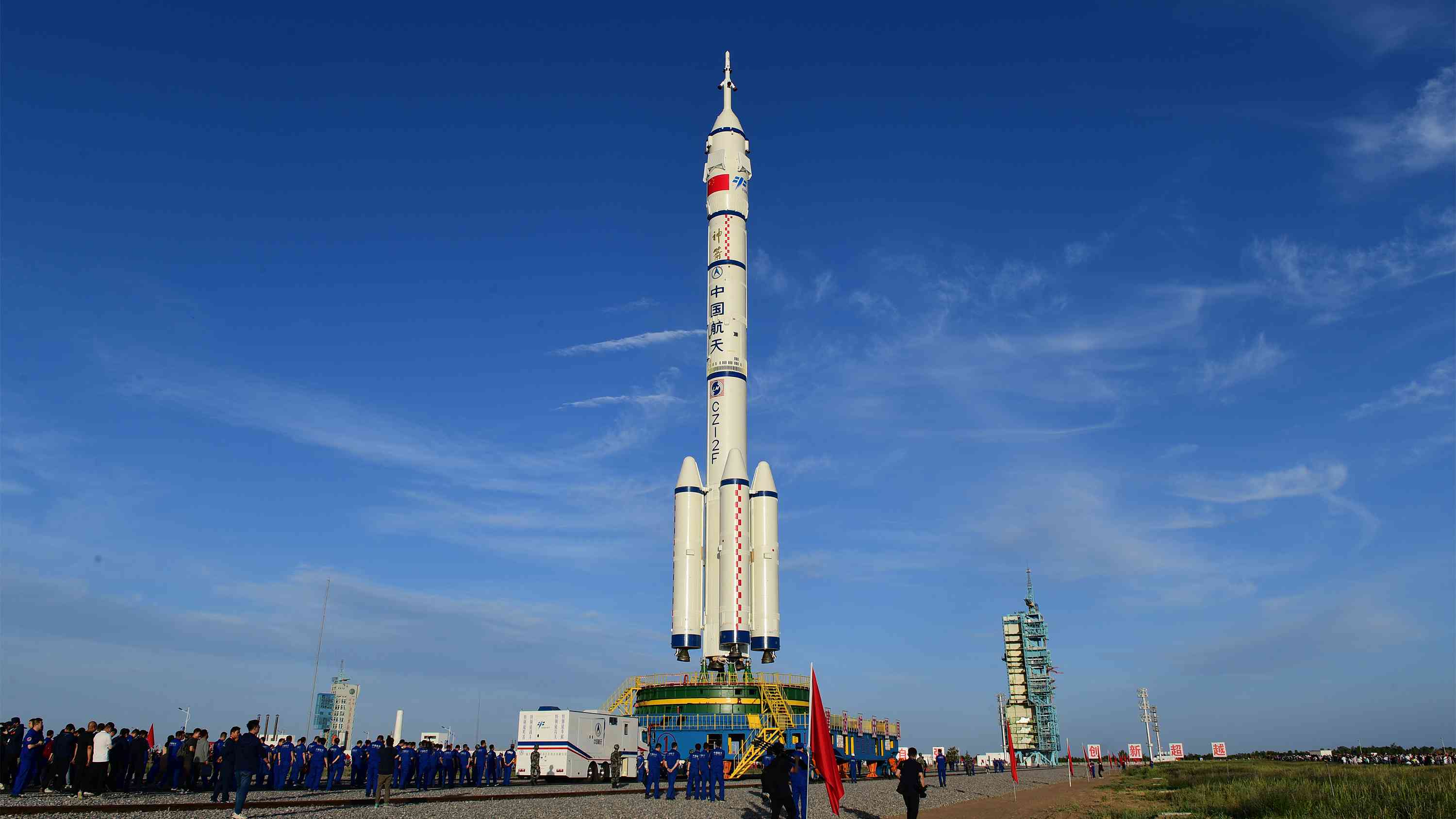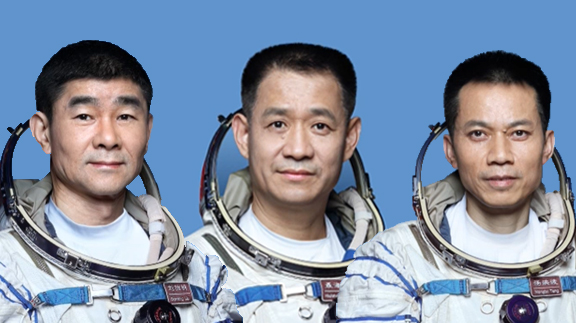
China's Long March-2F Y12 rocket, carrying Shenzhou-12 spacecraft for manned space mission, arrives at the launch pad at Jiuquan Satellite Launch Center, NW China, June 9, 2021. /CGTN
China's Long March-2F Y12 rocket, carrying Shenzhou-12 spacecraft for manned space mission, arrives at the launch pad at Jiuquan Satellite Launch Center, NW China, June 9, 2021. /CGTN
Editor's note: Yang Yuguang is vice chair of the Space Transportation Committee of the International Astronautical Federation. The article reflects the author's opinions and not necessarily the views of CGTN.
On June 17, China sent the Shenzhou-12 spacecraft and three astronauts to an orbiting space station module. After more than 60 years of development, China has already become a big player in space.
It has been number two in launches several times in recent years, and sometimes even number one. The scale of the space industry and correlated production has played a very important role in the national economy and in daily life.
However, China is not yet an advanced country in space. The only two advanced countries, or space superpowers, are the U.S. and the former Soviet Union/Russia. China still has a lot of things to do to achieve that designation.
Remote sensing/Earth observation satellites, communication satellites and navigation satellites can serve the economy directly. Although China has already launched and is now operating many of these satellites, and some of them have very high performance as good as those in advanced countries, the downstream industry still needs to be enhanced. More advanced satellites are planned and will be developed, but applications will also be booming.
For instance, China has completed the construction of Beidou-3 Navigation Satellite constellation and begun to provide accurate positioning and timing services to the whole globe, but we still have a long way to achieve the scale of GPS. With more and more mobile phone providers adopting chips that support Beidou navigation signals, we can visualize forming a huge industry like GPS.
Concerning lunar exploration and deep space exploration, in certain fields, China has already become an advanced country. China is the first country in the world that achieved a soft landing on the far side of the Moon. Chang'e-4 lander and its Jade Rabbit-2 rover are still working there. China's Chang'e-5 sample return mission brought back 1.731kg of lunar soil and rocks – much greater than the sum of all samples returned by Luna-16, 20 and 24 missions of the Soviet Union.

Astronauts Nie Haisheng (C), Liu Boming (L) and Tang Hongbo are on China's first crewed space station mission. /CMG
Astronauts Nie Haisheng (C), Liu Boming (L) and Tang Hongbo are on China's first crewed space station mission. /CMG
Moreover, the Chang'e-5 achieved the world's first unmanned automatic rendezvous and docking in circumlunar orbit. China is also the second country in the world, just behind the U.S., to put a probe on the Martian surface and perform scientific research. For manned space flights, China has sent 11 astronauts to space and safely got them back in six Shenzhou flight missions.
But we should also aware that the Soviet Union sent the first cosmonaut into space 60 years before, and U.S. astronauts had walked on the Moon more than half a century before. The International Space Station (ISS) has been crewed for over 20 years continuously. To be an advanced country in human space flight, China must have its own space station.
Because China is still a developing country, China's Tiangong space station is much smaller than ISS. Its initial phase will have three modules, the Tianhe core module, Wentian experimental module and Mengtian experimental module, plus the Tianzhou cargo ship and Shenzhou crewed spaceship. The combination will be about 100t, about 1/4 of the size of ISS. But this station is expandable. By adding another core module, and the other two experimental modules, the whole scale can reach 180t after 2030.
After being launched on 29 April, the Tianhe-1 core module is already orbiting the Earth. With Tianzhou-2 cargo ship docking to it, we now have supplies that can support 3 astronauts to stay in the station for 3 months. The Shenzhou-12 spaceship will bring three Chinese astronauts to the Tianhe-1 and perform scientific and engineering research, including regenerative life support, long-term residence and robotic arm operations.
Although we do not construct the station directly, Shenzhou-12/13 and Tianzhou-2/3 missions will help verify all the necessary technologies to operate the station. Only when all these have been approved will the name of Tianhe-1 change from "experimental core module" to formal "core module", or another core module will be launched to replace Tianhe-1.
For China, the mark of an advanced country in human space flight is to complete the construction of the Tiangong space station and operate it properly. But leaders of China aerospace and some Chinese astronauts have also expressed their wish to have human missions to the Moon. Although Chang'e-5 sample return mission is only a robotic one, its mission profile is very similar to Apollo missions. China is also performing much preparatory work for potential human lunar missions, such as the 500t level rocket engine and a prototype of a new generation manned spaceship. Sooner or later, Chinese astronauts will walk on the Moon.
While it can be concluded that China still has a long way to go before becoming an advanced country in space, it's certain that Chinese aerospace will achieve this goal in coming decades.
(If you want to contribute and have specific expertise, please contact us at opinions@cgtn.com.)

